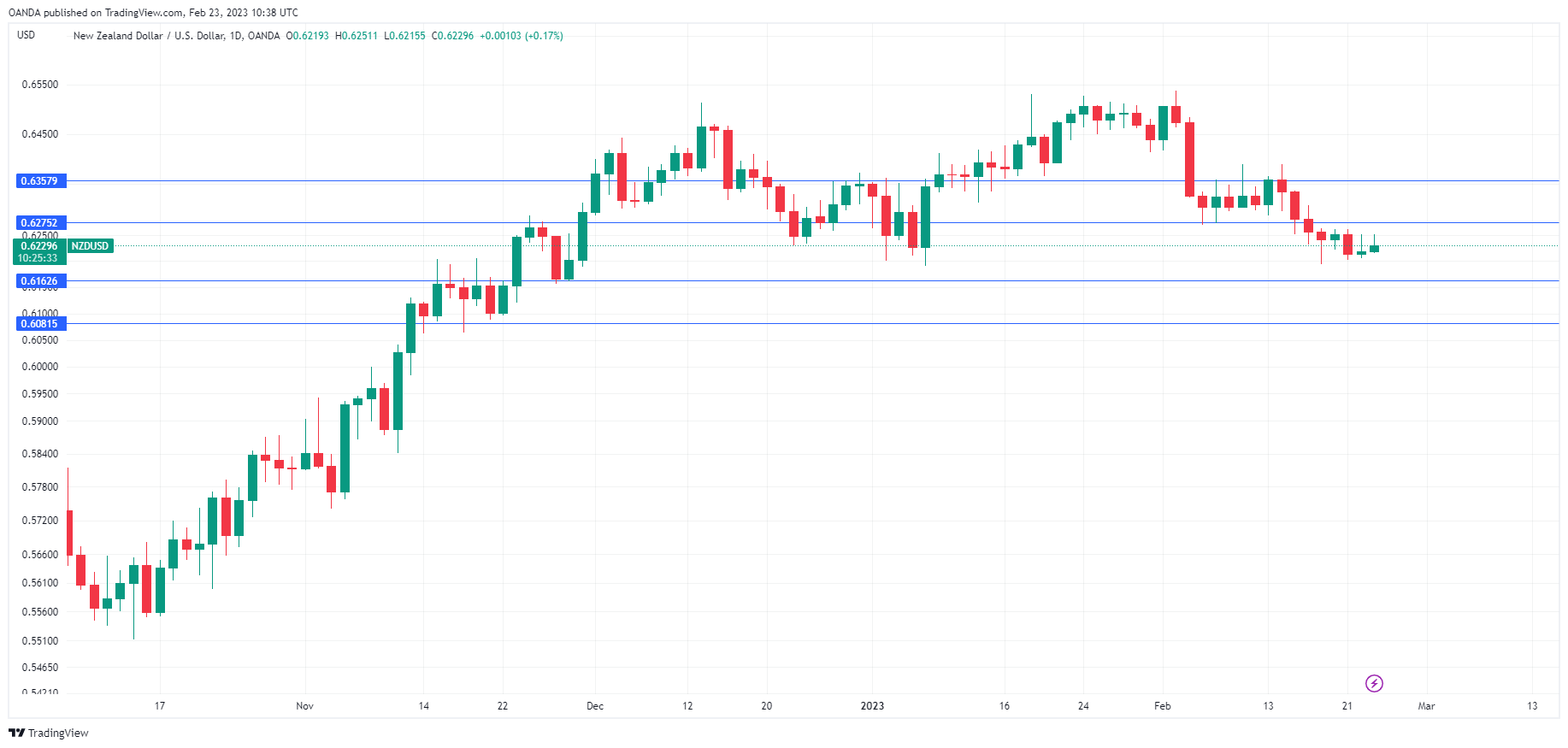New Zealand Dollar Steady After RBNZ, FOMC Minutes
MarketPulse | Feb 23, 2023 06:47AM ET
The New Zealand dollar remains in calm waters, with little reaction to the Reserve Bank of New Zealand’s rate hike or the FOMC minutes.
The RBNZ raised rates by a half-point on Wednesday, as the central bank remains aggressive in its battle to curb inflation. The move was in line with expectations and the New Zealand dollar moved higher but quickly pared those gains. The increase brings the cash rate to 4.75%, its highest level since 2009. With inflation running at a 7.2% clip, the RBNZ will have to keep raising rates until there is clear evidence that inflation has peaked.
There was a strong possibility that the RBNZ would deliver a second straight hike of 0.75%, but Cyclone Gabrielle, which caused massive damage, led the bank to opt for a more modest hike of 0.50%. RBNZ Governor Orr said that it was too early to assess the monetary policy implications of Gabrielle but Orr noted that the rebuilding efforts would add to inflationary pressures.
The rate statement was crystal clear with regard to future policy. The statement said although there are signs of inflation falling, the core rate and inflation expectations are too high, and “monetary conditions need to tighten further” in order to bring inflation back down to the target of 1%-3%.
FOMC says more hikes needed
The FOMC minutes sounded a lot like the RBNZ statement, with Fed policymakers saying that there were signs that inflation had eased but more rate hikes were needed to lower inflation back to the 2% target. The minutes noted that the labor market remains robust, which is contributing to continuing upward pressures on wages and prices.” The Fed meeting took place before the blowout January employment report, and concerns over a hot labor market will be even more amplified.
An important takeaway from the minutes is that although the vote to hike by 0.25% was unanimous, two members (Bullard and Mester) saw a case for a 0.50% increase. The Fed has been consistent in its hawkish stance, and what has changed over the past few weeks is that market pricing is more aligned with the Fed, with the markets no longer projecting a rate cut late in the year. Still, market pricing could shift again if the next batch of key data weakens ahead of the March 22 meeting.

NZD/USD Technical
- There is resistance at 0.6275 and 0.6357
- 0.6162 and 0.6080 are providing support
Original Post

Trading in financial instruments and/or cryptocurrencies involves high risks including the risk of losing some, or all, of your investment amount, and may not be suitable for all investors. Prices of cryptocurrencies are extremely volatile and may be affected by external factors such as financial, regulatory or political events. Trading on margin increases the financial risks.
Before deciding to trade in financial instrument or cryptocurrencies you should be fully informed of the risks and costs associated with trading the financial markets, carefully consider your investment objectives, level of experience, and risk appetite, and seek professional advice where needed.
Fusion Media would like to remind you that the data contained in this website is not necessarily real-time nor accurate. The data and prices on the website are not necessarily provided by any market or exchange, but may be provided by market makers, and so prices may not be accurate and may differ from the actual price at any given market, meaning prices are indicative and not appropriate for trading purposes. Fusion Media and any provider of the data contained in this website will not accept liability for any loss or damage as a result of your trading, or your reliance on the information contained within this website.
It is prohibited to use, store, reproduce, display, modify, transmit or distribute the data contained in this website without the explicit prior written permission of Fusion Media and/or the data provider. All intellectual property rights are reserved by the providers and/or the exchange providing the data contained in this website.
Fusion Media may be compensated by the advertisers that appear on the website, based on your interaction with the advertisements or advertisers.